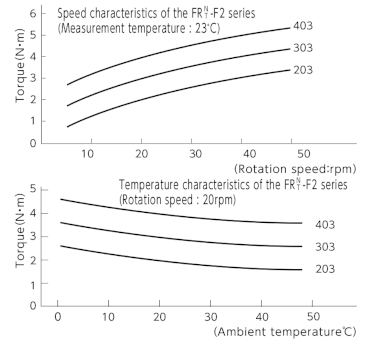FRT/FRN-F2
Rotary dampers

Bansbach rotary dampers and dashpots are used to dampen drives, control speed, and many other applications. Our rotational viscous dampers are maintenance free and the most durable units on the market. Bansbach silicone oil viscous dampers are available in either fixed rate or adjustable models. The damping direction of the rotary dampers with continuous rotation can be clockwise, counter clockwise, or in both directions. In rotary dampers with continuous rotation, a fluid damping is produced by the shearing or braking force of silicon fluids resistance between the surfaces of a rotor and a stator. The damping moment is determined by the viscosity of the fluid and the size of the orifice or gap. The damping characteristics can be customized by changing the viscosity of the silicon fluid or by changing the structure of the rotor and stator. Rotary dampers life-cycles are typically in excess of 50,000 cycles. The service life may be significantly higher or lower, depending on the application. After extended life cycles the dampers still produce over approx. 80% of their original damping moment.
| Model | Rated torque | Damping direction | Max. rotation speed | Max. cycle rate | Operating temperature | Weight | Body and cap material | Rotating shaft material | Oil type |
|---|---|---|---|---|---|---|---|---|---|
| FRT-F2-203 | (2.0±0.4)Nm (20±4kgfcm) | Both directions | 50rpm | 10 cycles/min | 0~50°C | FRT-F2 : 115.6g, FRN-F2 : 93.2g | Polycarbonate + glass fiber composite | Metal (SUS) | Silicone oil |
| FRT-F2-303 | (3.0±0.8)Nm (30±8kgfcm) | Both directions | |||||||
| FRT-F2-403 | (4.0±1.0)Nm (40±10kgfcm) | Both directions | |||||||
| FRN-F2-R203 | (2±0.4)Nm (20±4kgfcm) | Clockwise | |||||||
| FRN-F2-L203 | Counter-clockwise |
 |
1. Speed characteristics: A rotary damper's torque varies according to the rotation speed. In general, as shown in the graph to the right, the torque increases as the rotation speed increases, and the torque decreases as the rotation speed decreases. In addition, please note that the starting torque slightly differs from the rated torque. |
| 2. Temperature characteristics: A rotary damper's torque varies according to the ambient temperature. In addition, as shown in the graph to the right, the torque decreases as the ambient temperature increases, and the torque increases as the ambient temperature decreases. This is because the viscosity of the silicone oil inside the damper varies according to the temperature. When the temperature returns to normal, the torque will return to normal as well. |


